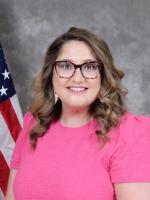One Second
,
Colorado Convention Center, Bluebird Ballroom Lobby, Table 12
Presenters



Session description
Purpose & objective
Participants will learn new ways to integrate technology through the use of the One Second Project. They will know how to expand storytelling through open-ended learning opportunities that focus on student voice. This will encourage collaboration and allow for opportunities to think of how to increase awareness of how we are alike as human beings.
Participants will be able to learn about the steps we took to build the One Second project. They will see how an idea to get students thinking turned in an opportunity for students to be creative and share their focuses in daily life.
Participants will be introduced to the choices students made in creating what one second of their life looks like every day. They will learn how these were turned into storytelling projects where students focused on the main idea of their own lives.
Participants will see how educational challenges such as limited resources, disengaged students, and larger class sizes can benefit from the use of the One Second Project. Ideas to help gain the support of teachers and administrators will also be given.
Participants will see how their students can become global thinkers and focus on how they utilize their time. Educators can get a glimpse of each students lives, the issues they find important, and the defining moments that unite us all.
Outline
During my poster session, I plan to engage with attendees through peer-to-peer interaction and a brief slide presentation that demonstrates examples of how the specific technology components were used to promote social good in our project, and what projects were developed by students. I will answer questions about any of the technology applications and student projects. I will have QR codes displayed, and on handouts, that will link to all of the session materials and takeaways. I intend it to be a free-flowing conversation but will be able to provide a 5-7 minute overview to larger groups using the slide presentation when necessary. I would like participants to walk away with ideas that will foster ways to include One Second in their digital storytelling as well.
Supporting research
Our One Second project is research-based and supported by an abundance of studies in the following categories: One Second as an effective learning environment, the need for student connections, learning from the environment, collaborative groups, project based learning, and real world applications. We are providing citations to multiple research papers and books that support our project in these categories.
Learning From the Environment:
Trisha Maynard & Jane Waters (2007) Learning in the outdoor environment: a missed opportunity?, Early Years, 27:3, 255-265.
Tina M. Waliczek and Jayne M. Zajicek (1999) School Gardening: Improving Environmental Attitudes of Children Through Hands-On Learning. Journal of Environmental Horticulture: December 1999, Vol. 17, No. 4, pp. 180-184.
Collaborative Groups:
Adams, Dennis, and Mary Hamm. Cooperative Learning: Critical Thinking and Collaboration Across the Curriculum.. Charles C. Thomas, Publishers, 2600 South First Street, Springfield, IL 62794-9265.
Stan, Ina Teodora. Group Interaction in the'Outdoor Classroom': the Process of Learning in Outdoor Education. Diss. Bucks New University, 2008.
Project Based Learning:
Stephanie Bell (2010) Project-Based Learning for the 21st Century: Skills for the Future, The Clearing House: A Journal of Educational Strategies, Issues and Ideas, 83:2, 39-43.
Christopher J. Kruger, Stephen C. Scogin, Regan E. Jekkals. (2019) The STREAM Program: Project-Based Learning in an Outdoor Context. Kappa Delta Pi Record 55:2, pages 85-88.
Real World Applications:
David Fortus, Joseph Krajcik, Ralph Charles Dershimer, Ronald W. Marx & Rachel Mamlok‐Naaman (2005) Design‐based science and real‐world problem‐solving, International Journal of Science Education, 27:7, 855-879.
Clapp, E.P., Ross, J., Ryan, J.O., Tishman, S. (2016). Maker-centered learning: Empowering young people to shape their worlds. John Wiley& Sons. Creative Problem Solving: Students' skills in tackling real-life problems (2014).
Session specifications
Laptop: Chromebook, Mac, PC
Tablet: Android, iOS, Windows
Knowledge Constructor
- Students curate information from digital resources using a variety of tools and methods to create collections of artifacts that demonstrate meaningful connections or conclusions.
- Students create original works or responsibly repurpose or remix digital resources into new creations.
- Students publish or present content that customizes the message and medium for their intended audiences.
 Return
Return Participate and share: Poster
Participate and share: Poster  Trips and Tours
Trips and Tours